Living Ayurveda: Meal Planning Tips
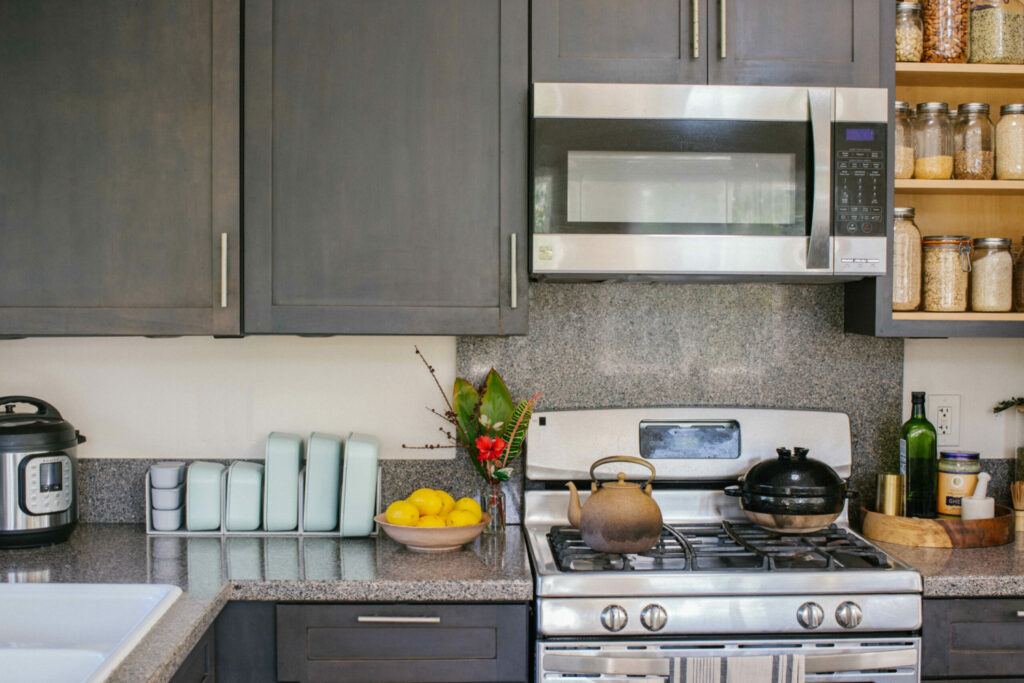
How do you eat well in our busy, modern world? The answer is simple: be prepared and organized. It makes all the difference to have the right tools and ingredients ready to use in your kitchen, and an idea of how you want to map out your meals for the week ahead. Ayurvedic wisdom promotes eating meals that are life-giving, fresh, and filled with prana. With a little planning and preparation, eating well doesn’t have to be taxing on your time or your budget. Here are a few ways you can plan, prep, and cook fresh meals for you, your family, or a larger gathering without stress.
Planning Ahead
Lack of time is a common complaint to eating nourishing home-cooked meals. Planning meals for the week ahead can help cut down on the confusion of what to eat while saving time, money, and food waste along the way. Try making meal planning a weekend ritual you look forward to. Map out your menu by looking ahead at your work schedule, social events, and your body’s needs. Pick one day to make your weekly meal plan and shopping list. Stick with your familiar meals and pepper in a few new fun recipes to try out on your slower days. Scour your cookbooks and favorite blogs to find new dishes to test. Your grocery list will reflect your new recipes, along with your staple ingredients you know you will rely on (think cilantro, leafy greens, root vegetables, and fresh dairy). This way you know what recipes you’re anchoring around while still having some flexibility to mix and match fresh ingredients in a quick meal.
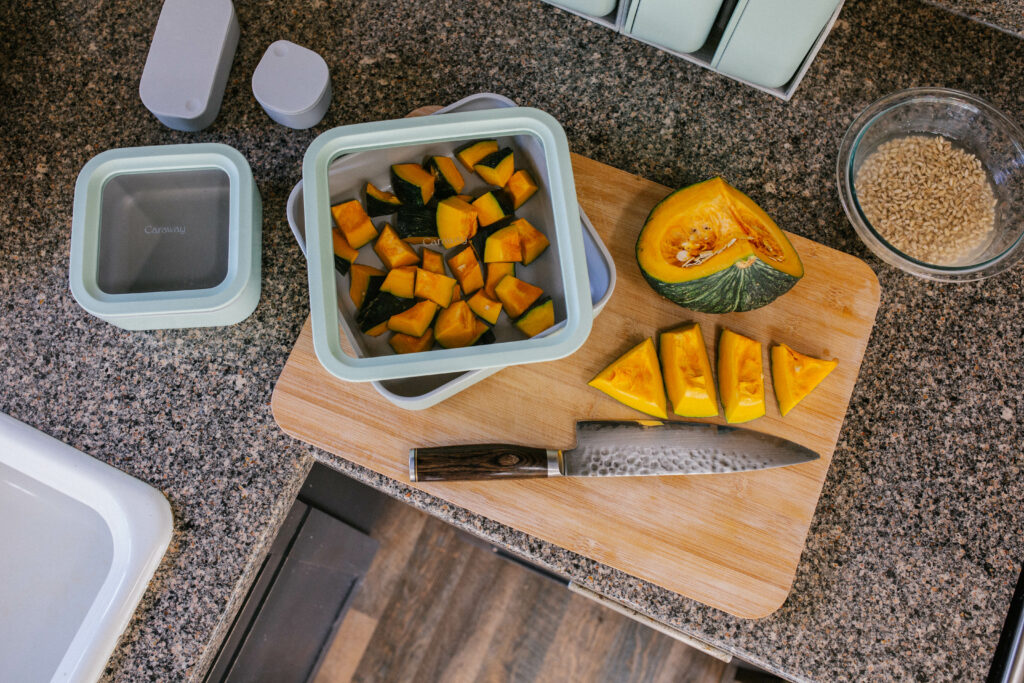
Batch Prepping
Instead of batch cooking, which makes you a big pot of something to reheat and eat throughout the week, try batch prepping. This way, you can quickly and easily cook fresh meals each day with ready-to-use ingredients. There’s nothing more frustrating than opening your fridge and seeing a whole butternut squash that still needs to be peeled, or wilted cilantro you forgot to wash and store properly. To batch prep, take time to wash, peel, and cut some of my more durable ingredients when you get home from the grocery store. This might mean cubing root vegetables and storing them in a container in the fridge for the week, or trimming and cutting leeks, scallions, shallots, or ginger to store in a jar for quick access. With lighter, more perishable ingredients such as greens, you may wash and cut these the night before use. Try preparing jars of pre-blended spice mixes for making chai, chutneys, kitchari, or other soups and stews.
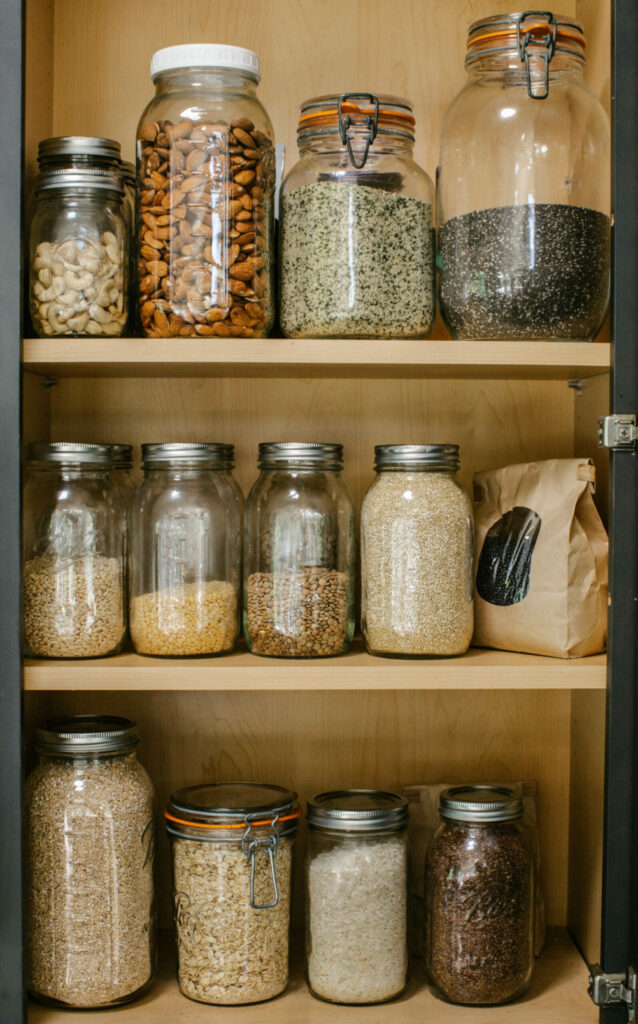
Keep Your Pantry Stocked
Keeping your pantry stocked with your favorite, everyday staples helps to save time and money on grocery shopping. Ayurvedic cooking uses affordable ingredients you’ll likely find in most bulk food sections at your local market or online sold in larger quantities. So instead of shopping for a single recipe, try buying your dry goods in bulk to stock your pantry.
- Whole grains such as amaranth, barley, buckwheat, farro, millet, rice, oats, quinoa, wheat bran
- Legumes such as adzuki beans, black eyed peas, black beans, chickpeas, kidney beans, lentils, lima beans, mung beans, split yellow mung dal, navy beans, pinto beans, split peas, tempeh, tofu (served hot), toor dal, urad dal, white beans
- Nuts and seeds such as almonds, Brazil nuts, cashews, hazelnut, macadamia nut, pecans, pinenuts, pistachios, walnuts, chia seeds, flax seeds, pumpkin seeds, sunflower seeds, poppy seeds
- Spices such as allspice, ajwain, black pepper, bay leaf, cardamom, caraway, cinnamon, chili, coriander, cumin, fennel, ginger, long pepper, mustard seed, nutmeg,
Tip: To stay tidy and organized, store your bulk items in glass jars or sealed containers you can organize and easily see the ingredients. You’ll be more likely to use them than let them get lost in a sea of plastic bags inside a messy cabinet or drawer! Keep your fridge organized by transferring bulk items into storage containers, I’m loving Caraway Home’s non-toxic ceramic food storage set to store my prepped veggies. Shop my link here to save 10% on your Caraway order!
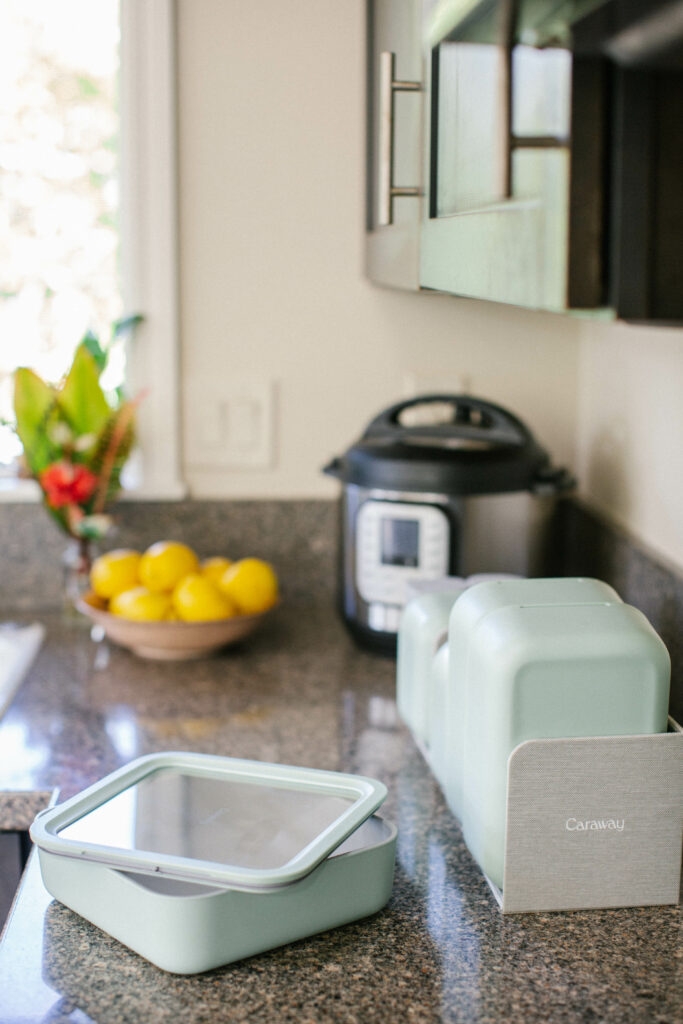
Using Time Saving Tools
Having the right equipment can also set you up for success in the kitchen. There are a few tools you’ll return to time and time again, some old and some new. Modern tools like the InstantPot, an electric pressure cooker, and the VitaClay, a clay pot rice and slow cooker, are two of my favorite ways to cut down on time in the kitchen. Having a wide-mouth thermos for food or hot drinks also helps you navigate eating well when at work or on the road. You don’t need too many fancy kitchen gadgets to prepare good food, just a few quality items you can rely on. Generally, when shopping for the right cookware, it’s best to avoid equipment that contains harmful chemicals, such as Teflon and aluminum. Instead, look for items that use natural materials such as wood, clay, cast-iron, and steel. Here’s a quick list of items to support your kitchen flow:
- Ceramic or earthenware pots
- Cast-iron skillet
- Stainless steel saucepans and pots
- Stovetop or electric pressure cooker
- Rice cooker
- Baking dishes, sheets and pans
- High-speed blender
- Wooden utensils
- Quality knives
- Microplane or handheld grater
- Fine-mesh sieve or colander
- Cheesecloth or nut milk bag
- Spice grinder (mortar and pestle or electric coffee grinder)
- Wide-Mouth Thermos (for taking food or hot beverages on the go when you can’t eat at home)
- Stackable Tiffin Lunchbox (another great way to take food to go)
- Ceramic Storage Containers (for batch prepping and storing ingredients)
- Beeswax Reusable Storage Wrap (a zero-waste way to wrap and store food)
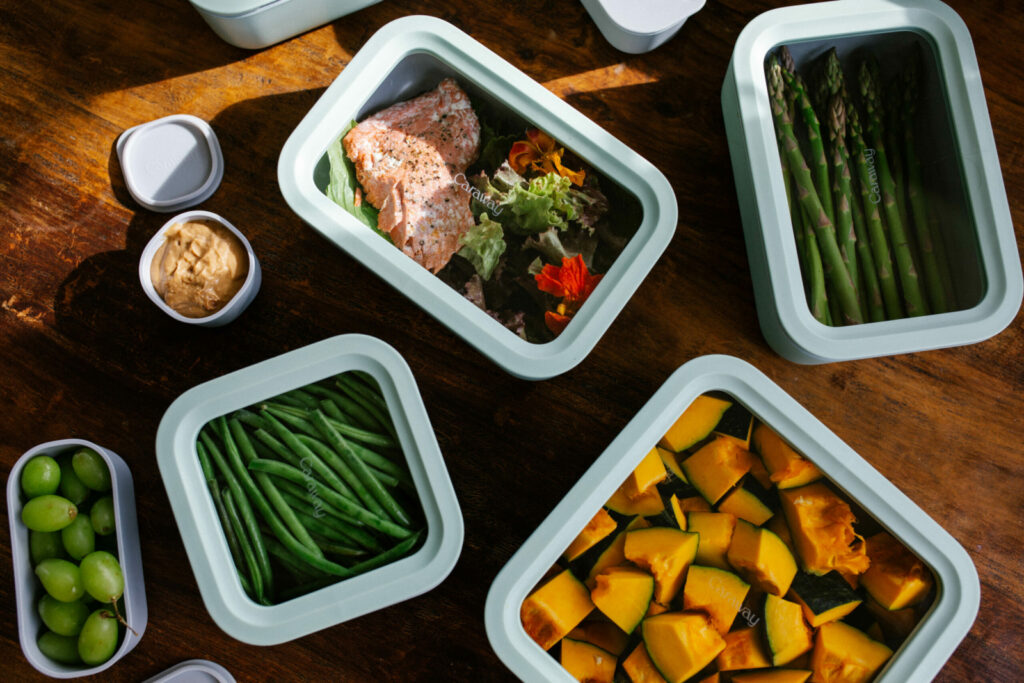
Cooking for One, Two, or a Few
As a rule of thumb, a ¼ cup of dried beans or rice is a good portion for a single serving of a dish such as kitchari; 1 handful of raw cut vegetables or 2 handfuls fresh cooked greens often serves one; and 2 hands cupped together is the desired portion for a meal you’d want to eat to satisfy your stomach’s needs without overfilling it. With this in mind, you can scale back the recipes if you’re cooking for one or double a recipe if you’re cooking for a few. You can also choose to cook ingredients separately, say a pot of whole grains, a legume dish, a veggie dish and chutney or condiment on the side. This way your picky eaters or meat eaters can mix and match what they want on their plate. You’ll be able to cook one main meal, with the option of keeping it vegetarian or adding an animal protein to complete their meal.
How to Modify Your Plan
Life happens, plans change, the weather shifts and so does your digestive capacity. The goal of a meal plan isn’t to lock you into a rigid routine, but rather to create a container for your creativity to flow while having enough structure so you don’t get off track when things get busy. You may check your meal plan each night and make the necessary adjustments for the next day as needed. If you’re feeling very dry, you may add more ghee to a recipe and cook your root vegetables into a soup instead of baking them. If you’re feeling ravenously hungry after a big run and your agni is insatiable, you may increase your portions or make a dosha-friendly snack, like ojas bites, to feed your agni as needed. If you’re feeling heavy or dull, you may add more digestive-boosting spices like ginger, cumin, coriander and pippali to increase your fire.
There’s a myriad of ways to modify your meals to meet your needs! With a general plan and an idea of how to work with these ingredients, meal planning becomes a fun part of your week and format to thrive within.
 [wpmenucart]
[wpmenucart] Recipes: My Favorite Kitchari Recipe + Ume Pickled Radishes
Recipes: My Favorite Kitchari Recipe + Ume Pickled Radishes  Interview: A Behind-the-Scenes Look at the Making of A Book
Interview: A Behind-the-Scenes Look at the Making of A Book  Ayurveda: Building Immunity in Home & Heart – A Downloadable Guide
Ayurveda: Building Immunity in Home & Heart – A Downloadable Guide 